Which Countries That Have Left-Hand Traffic: Top 10 and Full List
 Best 'Left-Handed Job' Helps 12 Zodiac Signs Make A lot of Money Best 'Left-Handed Job' Helps 12 Zodiac Signs Make A lot of Money |
 Why Are Most People Naturally Right-Handed and Rare to be Left-Handed? Why Are Most People Naturally Right-Handed and Rare to be Left-Handed? |
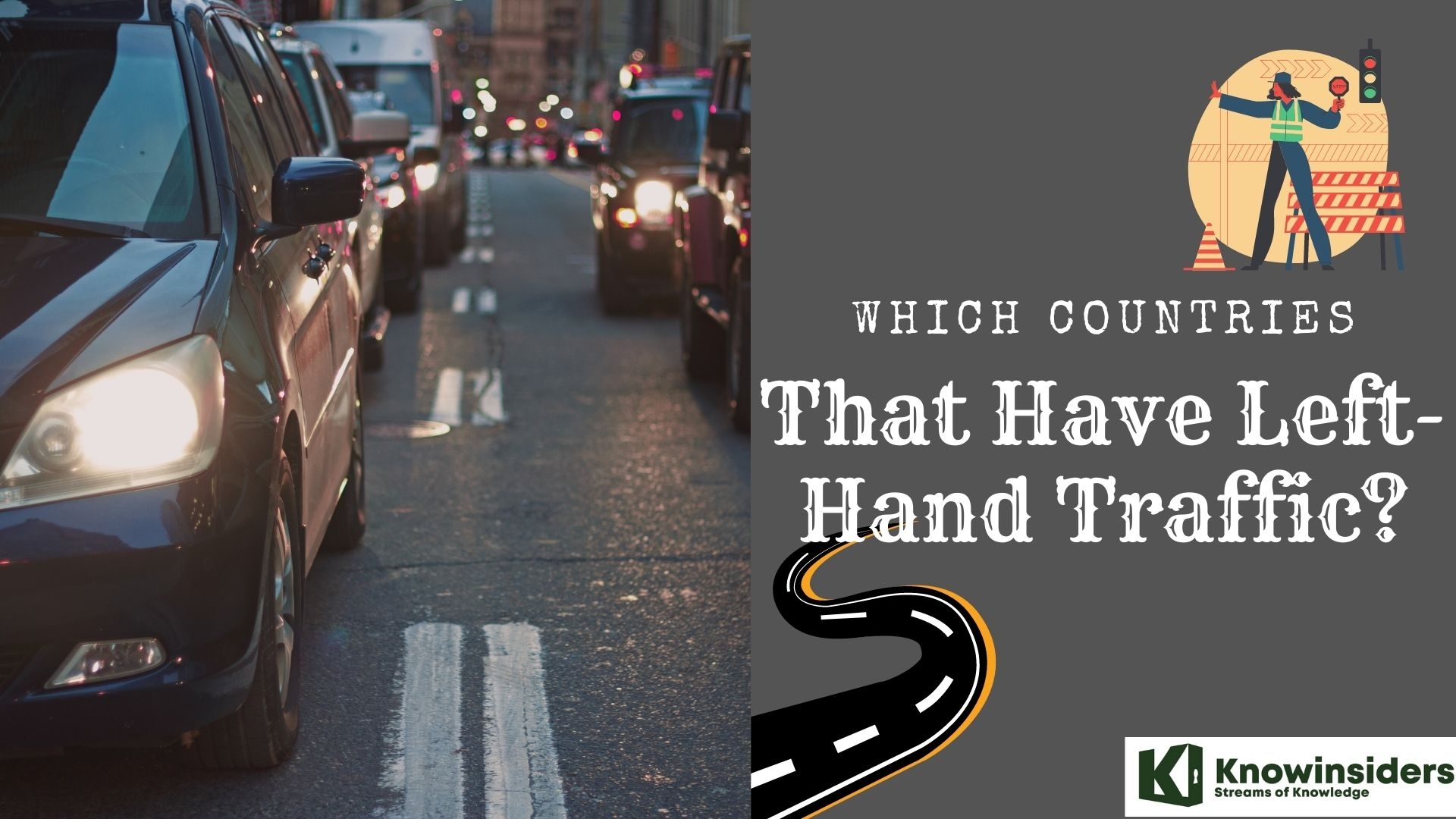 |
| Full List of Countries That Have Left-Hand Traffic in the World |
| Table of Content |
Anyone considering operating a vehicle in a foreign country should be aware of which side of the road people drive on.
Driving on the right side of the road is the norm in 163 countries and territories, while it is the norm in 76 others.
About 30% of the world's population lives in former British colonies, many of which drive on the left, including those in Southeast Asia, Southern Africa, and Oceania.
Since most people used their right hands, they were traveling on the left side of the road and protecting their left so they could reach their swords with ease if a threat appeared. In the 1300s, driving on the left side of the road became officially recognized.
The history, the distinction between left- and right-hand traffic, and some of the nations that still use left-hand traffic are listed below.
Why do some countries drive on the left side of the road?
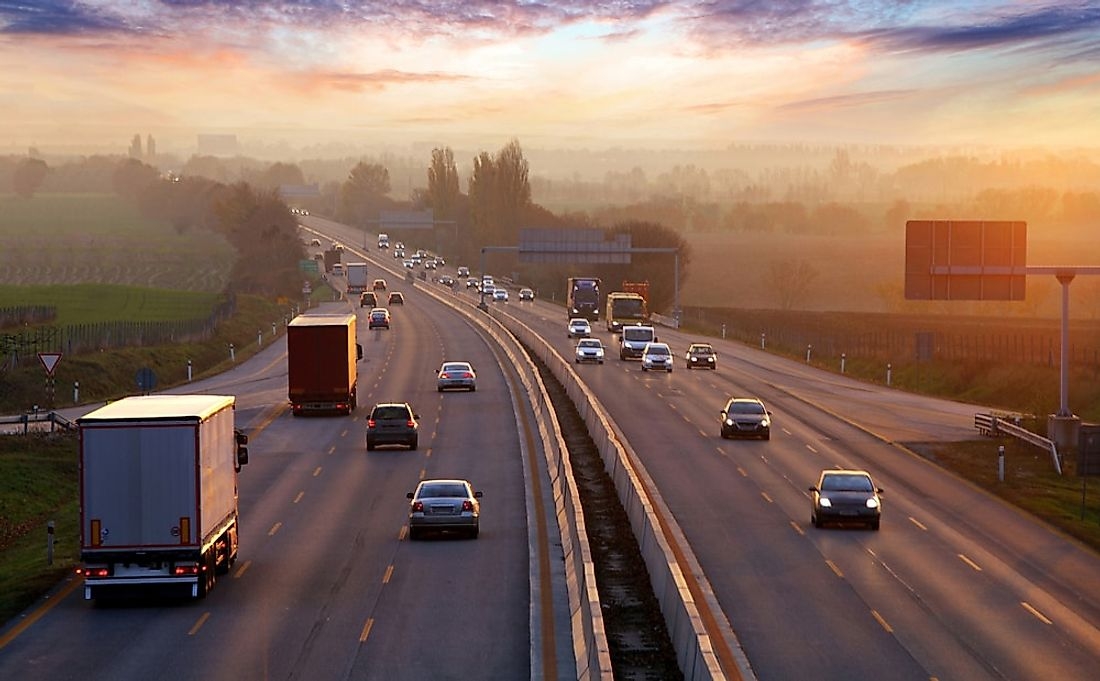 |
| Some countries drive on the left side of the road |
The ancient Romans may have driven their chariots and carts on the left, according to archeological evidence, and the custom appears to have survived into some areas of medieval Europe. Although the reasons for this are unclear, some people think that safety concerns are to blame. According to one theory, since most people are right-handed, moving to the left while driving or riding would have given them the opportunity to use their dominant hand to arm themselves in case they encountered an enemy.
Horse and wagon traffic was so infrequent until the early 1700s that local custom frequently determined whether to drive on the left or right. After government regulations were passed in 1773 and 1835, left-hand traffic finally became the norm in Britain, but France had a different tradition that had favored the right since the 18th century.
Many former British colonies, including Australia, New Zealand, South Africa, and India, still drive on the left because these two nations later exported their driving habits to their respective colonies. In contrast, many academics in the United States attribute the emergence of freight wagons drawn by large teams of horses in the 18th century as the beginning of right-hand traffic.
In order to more easily control their animal team with their right hand, drivers frequently rode on the left rear horse of these vehicles since they frequently lacked a driver's seat.
Traffic naturally shifted to the right as the popularity of the wagons increased so that drivers could sit closer to the center of the road and prevent collisions. Henry Ford, the creator of the Model T, was yet another significant influence because he mass-produced it with a left-facing steering wheel that required right-handed driving.
Nowadays, left-hand traffic is still the norm in countries like Japan, Indonesia, Thailand, and many of Britain's former colonies. However, many nations have changed to the right in order to blend in with their neighbors as the use of automobiles has increased. In order to facilitate travel to and from the United States, Canada gave up driving on the left side of the road in the 1920s. Meanwhile, Sweden's government spent about $120 million getting its citizens ready to start driving on the right in 1967.
Left- and right-hand traffic
In bidirectional traffic, left-hand traffic (LHT) and right-hand traffic (RHT) refer to the practices of staying on the left or right side of the road, respectively. They are essential for smooth traffic flow and are also known as the "rule of the road." In contrast to right- and left-hand traffic, the terms right- and left-hand drive describe where the driver sits behind the wheel of the car.
If more than one vehicle can travel in one direction, the rule also applies to where a vehicle should be driven on the road as well as to which side it should overtake the vehicle in front. For instance, a driver in an LHT nation would pass on the right side of the car being passed.
In bidirectional traffic, left-hand traffic (LHT) and right-hand traffic (RHT) refer to the practices of staying on the left or right side of the road, respectively. They are essential for smooth traffic flow and are also known as the "rule of the road." In contrast to right- and left-hand traffic, the terms right- and left-hand drive describe where the driver sits behind the wheel of the car.
If more than one vehicle can travel in one direction, the rule also applies to where a vehicle should be driven on the road as well as to which side it should overtake the vehicle in front. For instance, a driver in an LHT nation would pass on the right side of the car being passed. 75 of the 169 countries and territories use LHT, while the remaining 165 use RHT. A third of the world's population, a sixth of its land area, and a quarter of its roads are in countries that use left-hand traffic. 104 territories around the world were LHT and an equal number were RHT in 1919.
34 of the LHT territories switched to RHT between 1919 and 1986. Although some, including Indonesia, Macau, Mozambique, Nepal, Suriname, Sweden (RHT since 1967), and Thailand, were not, many of the nations that adopted LHT were formerly a part of the British Empire. Similar to this, RHT was adopted by a large number of the nations that made up the French colonial empire.
In left-hand drive (LHT) vehicles, the steering wheel is typically on the right (RHD, or right-hand drive). A roundabout moves clockwise. RHT is the opposite of this: traffic moves right, cars are typically driven with the left hand (LHD) and roundabouts rotate counterclockwise. Although many of the nations that switched their road traffic from LHT to RHT did not switch their trains, most rail traffic follows the handedness of the roads. River boat traffic is essentially RHT. In order to facilitate priority to the right, boats are typically steered from the starboard side.
Features of the Left-Hand Traffic
 |
| Photo: besthqwallpapers |
• The traffic flows from the left, only the right lane can be used to pass the vehicle in front.
• The traffic from the opposite direction is on the right.
• Most traffic signs are on the left side of the road where drivers can see.
• Vehicles turn clockwise as they return from traffic hubs.
• When the rails cross over, they first look to their right.
• The vehicle’s driver’s seat is on the right.
• Where there is no sidewalk, pedestrians must walk from the right side of the highway.
Features of the Right-Hand Traffic
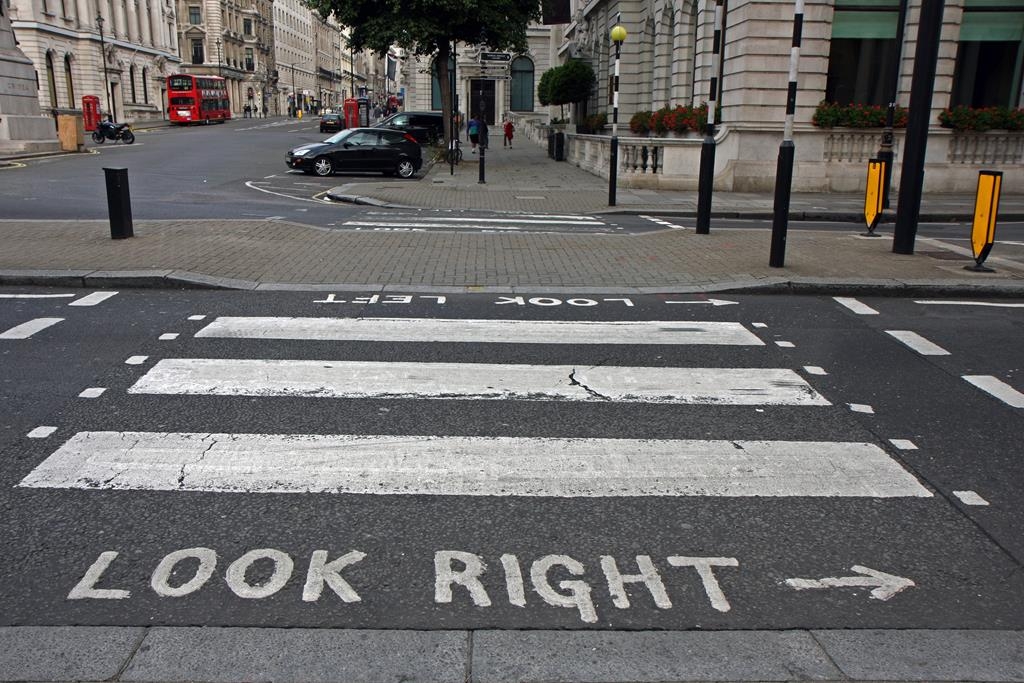 |
| Photo: Depositphotos |
• The traffic flows from the right, only the left lane can be used to pass the vehicle in front.
• The traffic from the opposite side stays on the left.
• Most traffic signs are on the right side where drivers can see.
• In the traffic hubs, when the cars turn, they turn clockwise in reverse.
• When the rails cross over, they first look to their left.
• The vehicle’s driver’s seat is on the left.
• Where there is no sidewalk, pedestrians must walk from the left side of the highway.
Top 10 of Countries that Traffic Flows on The Left
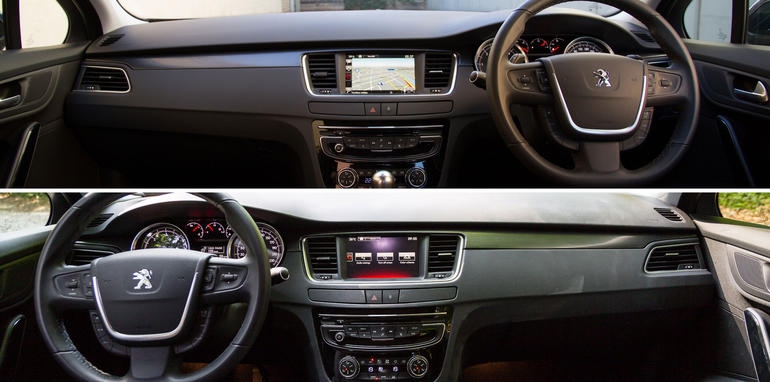 |
| Photo: ParkWheels |
1. Australia
Australians follow left-hand traffic regulations, in contrast to 66% of the world's population. Additionally, it means that cars have steering wheels on the right side, which puts the driver closer to the middle of the road. The United Kingdom, New Zealand, India, and Japan are other nations that practice this.
If you plan to drive in Australia in a rental car, keep in mind that everything is essentially mirrored if you're used to driving on the right. Here are our top five suggestions for what to keep in mind before you leave (on the left-hand side of the road):
1. Watch out for roundabouts. Just as you’ll be driving on the left, roundabouts will rotate to the left. You’ll also exit on the left. However, be mindful that you’ll need to give way to any traffic coming from your right before entering.
2. Turning right at an intersection will require crossing the intersection, and oftentimes where traffic lights are present, you will need to wait for the right-hand arrow to turn green. There are also intersections where right-hand turns won’t be allowed at all.
3. If the intersection has stop signs instead of traffic lights, you’ll need to give way to any cars on your right before moving through, as well as any cars whose path you’ll be crossing.
4. When coming up to a pedestrian crossing, you’ll want to check on your left, then right, to account for which curb you are closest to.
5. However, if you’re not in the car and you find yourself at a pedestrian crossing, make sure to look right first, then left, before crossing.
6 Australian States Take on Left-Hand Drive Vehicles
New South Wales
LHD vehicles are only permitted in NSW if they comply with specific requirements. Almost without exception, all vehicles over 4.5 tonnes must be right-hand drive (RHD). The only LHD vehicles over 4.5 tonnes are special purpose vehicles like street sweepers. LHD will register vehicles that weigh less than 4.5 tonnes and are older than 30 years. The car must have been in this condition from the beginning; otherwise, it cannot be licensed, even if it complies with the weight and age requirements.
There are some exceptions, but most other vehicles of this size that are less than 30 years old must be RHD. A LHD vehicle must be evaluated by a certified professional to see if it can be registered in this manner. Unregisterable LHD vehicles must be converted to RHD, and the conversion must be evaluated before registration.
All NSW road safety road worthiness requirements must be met by vehicles before they can be registered as LHD. They must have headlights that dip downward or downward and to the left, as well as rearview mirrors on both sides of the vehicle. Since imported vehicles make up the majority of LHD vehicles, they must also adhere to NSW registration requirements for imported vehicles.
Western Australia
In Western Australia, LHD vehicles that weigh less than 4.5 tonnes and are at least 15 years old can still be registered. These automobiles are only licensed for private use and must adhere to certain standards. Australian Design Rules (ADRs), among other requirements for roadworthiness in Western Australia, must be met by the vehicles.
LHD vehicles must have seat belts made to British, Australian, or other standards that are deemed to be good standards in order to be licensed in WA. As long as the seat belts are clearly marked as having been manufactured in accordance with these standards, American and Japanese seat belt standards are acceptable. According to the age and class of the vehicle, properly positioned head rests and child restraint anchorage points must adhere to the relevant ADRs.
Every LHD vehicle, without exception, must have two side mirrors. The vehicle's headlights must slant downward and to the left or conform to RHD vehicle requirements. Rear indicator lights must be amber for vehicles made after June 1973.
Vehicles with LHD driveshafts can be made RHD. It is advised that this modification be made prior to licensing. The conversion procedure and manner must adhere to the minimum standards for craftsmanship and safety.
South Australia
Only vehicles older than 30 years old may be licensed as LHD in South Australia. These vehicles might be fully licensed to be driven on South Australian roads if they satisfy a few other requirements. A single-trip exemption is available for vehicles under 30 years old that are being driven from the area of import to the owner's residence or the location of the conversion.
Vehicles that are licensed in LHD must match the original manufacturer's specifications exactly. This also applies to the material used in some parts but not in others. It does take into account the design of the car and its original features. All vehicles must be safe to drive and in good condition, which includes being free of rust, dents, and other damage.
Depending on the age of the vehicle, additional features might be required. For instance, child restraint anchorage points and head restraints are requirements for vehicles made after 1977 but not for those made before 1972. Some modifications are allowed, such as the installation of seat belts or switching from a left-side exhaust pipe to a rear exhaust pipe because left-side exhaust pipes are illegal in South Africa. All vehicles that are to have LHD permanent license plates must undergo a qualified person's inspection.
2. Britain
When riding a horse in the Middle Ages, you never knew who you would run into. Since most people are right-handed, if a stranger approached you on your right, you would have access to your sword with ease. (Similar to how staircases in medieval castles spiral up in a clockwise direction, preventing attackers from ascending the stairs while allowing defending soldiers to stab down around the twist.))
The 'keep to the left' rule actually dates back even further in history; archaeologists have found evidence that the Romans may have driven carts and wagons on the left, and it is well known that Roman soldiers always marched on the left.
When Pope Boniface VIII enjoined all pilgrims going to Rome to stay to the left, this "rule of the road" became law in 1300 AD.
This persisted until the late 1700s, when big wagons started to be used for moving goods. There was no driver's seat in these wagons, which were drawn by several paired horses. Instead, the driver sat on the left-rear horse in order to control the horses, freeing up his whip hand in the process. However, as anyone who has driven a left-hand drive car along the winding roads of Britain will agree, sitting on the left made it difficult to judge the traffic coming from the other direction.
The vast open spaces and long distances of Canada and the US were best suited for these enormous wagons, and the first keep-to-the-right law was passed in Pennsylvania in 1792. Subsequently, many Canadian and US states followed suit.
The "common" right was mandated by a French law passed in 1792, and Napoleon later made all French territories subject to it.
These large wagons were rarely needed in Britain, where smaller carriages had seats for the driver to sit on behind the horses. The driver would sit to the right of the seat so his whip hand was free because most people are right-handed.
Due to heavy traffic, a law requiring all traffic on London Bridge to stay to the left was passed in the 18th century to lessen collisions. The Highway Act of 1835 included this regulation, which became the standard across the British Empire.
Driving on the right instead of the left gradually became more common in Europe during the 20th century as a result of efforts to harmonize the continent's traffic laws. The brave Swedes bravely made the switch overnight on Dagen H (H Day), September 3, 1967, making them the last Europeans to do so. At 4.50 am, all of Sweden's traffic came to a complete stop for ten minutes before starting up again, this time on the right.
Only 35% of nations today still use the left-hand drive. These nations include Samoa in 2009, as well as India, Indonesia, Ireland, Malta, Cyprus, Japan, New Zealand, and Australia. Since most of these nations are islands, changing from left to right at land borders is typically done with the aid of traffic lights, cross-over bridges, one-way systems, or other devices.
3. Hong Kong
The seamlessness of crossing the border into China is what makes it startling. You are driving down a clean Hong Kong highway in a moment. After a quick trip through immigration, which is much easier than crossing the border on foot, you are then thrust into Shenzhen's chaotic traffic. Realizing that you are now driving on the opposite side of the road takes some time.
Mainland China drives on the right, while Hong Kong drives on the left. It serves as a reminder of how the former British colony's 156 years of colonial rule continue to have a significant impact on every aspect of Hong Kong life and is one of the most obvious differences between it and its estranged motherland. The "way of life" in the city will not change until 2047, according to the Basic Law, which was adopted in 1997 when China regained control over Hong Kong. Officials on both sides of the border, however, are eager to bind Hong Kong to the mainland even more. You might be wondering how much longer the Special Administrative Region will allow left-hand driving.
A city that continues to function as a reflection of the nation it is a part of carries with it a certain amount of symbolism. You could even interpret it as a reflection of Hong Kong's strength and stature. Early in the new millennium, designers of an elegant cable-stayed bridge for Shenzhen Bay imagined it to be an extension of Hong Kong into the Chinese mainland. And that's exactly how the Hong Kong-Shenzhen Western Corridor has operated since it opened in 2007: until it reaches a border crossing that is located well into western Shenzhen, traffic remains to the left. The road and bridge are under Hong Kong's control and are being leased by China until 2047.
The 30-kilometer bridge connecting Hong Kong, Zhuhai, and Macau is the exact opposite. Vehicles enter mainland territory and are operated in accordance with mainland laws, including driving on the right, the moment they pass through the border control facility, which is situated on a man-made island close to the Hong Kong International Airport. That's true even though only a few mainland vehicles are permitted to use the bridge; almost all of its traffic is made up of cars and trucks registered in Hong Kong or Macau, both of which drive on the left.
4. Indonesia
Based on the lane position in which cars drive on public roads, there are right-driving and left-driving countries worldwide.
Left or right-hand drive refers to the position of the steering wheel in a vehicle, whereas left or right driving refers to the driving position of vehicles on public roads (left or right lane).
According to worldstandards.eu, the majority of the other countries drive on the right, and only about 35% of people in the world drive on the left, mostly in former British colonies. The United Kingdom, Japan, Australia, India, Singapore, Hong Kong, and Indonesia are examples of the former with right-hand-drive automobiles.
For feudal, violent societies, driving on the left side of the road made the most sense, so almost everyone did it in the past. According to the website worldstandards.eu, "Swordsmen preferred to keep to the left because most people are right-handed in order to have their right arm closer to an opponent and their scabbard further from him.
The concept of right-hand driving was adopted by Indonesia and the majority of Southeast Asian nations as a result of British colonialism. According to carmudi.co.id, the decision to switch Indonesia to left-hand driving was based on a number of factors, as right-hand drive vehicles were the majority of the imported vehicles during the colonial era.
Japanese-made vehicles eventually attracted Indonesian consumers' attention because they were more affordable than left-hand-drive vehicles produced by European automakers. The decision to adopt a left-driving system was also influenced by similarities between the average posture of Indonesians and Japanese people.
5. Ireland
Since feudal, violent societies were the norm in the past, almost everyone used to drive on the left side of the road. Since most people use their right hand, swordsmen preferred to move to the left so that their right arm would be closer to an opponent and their scabbard, which serves as a sheath for a sword or dagger blade, would be farther away. Additionally, it lessened the possibility that the left-handed scabbard would strike someone else.
A right-handed person also finds it simpler to mount a horse from the left side of the animal, as doing so would be very challenging if they were carrying a sword, which is typically carried on the left. If one mounts on the left, then the horse should be ridden on the left side of the road because it is safer to mount and dismount toward the side of the road than in the middle of traffic.
However, teamsters in France and the United States started transporting farm goods in large wagons drawn by numerous pairs of horses in the late 1700s. In order to keep his right arm free to lash the team, the driver of these wagons sat on the left rear horse instead of the driver's seat. He naturally wanted everyone to pass on the left since he was sitting on the left so he could look down and make sure he didn't run into the wheels of the approaching wagon. He stayed on the right side of the road as a result. Thus, right-hand driving became increasingly popular in France and the USA.
Europe's adoption of right-hand driving received a major boost from the French Revolution of 1789. However, after the storming of the Bastille and the events that followed, aristocrats preferred to keep a low profile and joined the peasants on the right. Prior to the French Revolution, the aristocracy traveled on the left of the road, pushing the peasantry over to the right. In Paris, a formal keep-right rule was established in 1794. The new rightism was spread by Napoleon's conquests to many regions of Spain and Italy, the Low Countries (Belgium, the Netherlands, and Luxembourg), Switzerland, Germany, and Poland.
Britain, the Austro-Hungarian Empire, and Portugal were among the states that resisted Napoleon and remained. Up until the end of World War I, this fixed division between the left- and right-hand nations in Europe persisted.
6. Japan
Although Japan was never a part of the British Empire, there is a left-hand traffic pattern there as well. This custom dates all the way back to the time when Samurai ruled the nation, during the Edo period (1603–1867) (same sword and scabbard deal as before), but it wasn't until 1872 that this unwritten custom was made official. The first railway in Japan was established in that year.
Three nations requested assistance from the Japanese government to establish a railway network. America, France, and Britain were the three nations in question. Ultimately, Britain prevailed. Thanks to the British, the first railway in Japan opened in 1872. From there a vast network of left-side running railways radiated outward. Japan is known for its love of trains. Japan would likely be driving today on the right side of the road if American or French railways had been constructed in their place.
Horse railways and electric trams adopted the left-side driving standard established by Japanese railroads. Automobiles first appeared around 1900. The Tokyo police first mandated that pedestrians stay to the left side of the road in a 1902 order. Left-side driving was finally made required by law in 1924.
Okinawa came under American control and was forced to drive on the right after Japan was defeated in World War II. When Okinawa was returned to Japan, it resumed driving on the left. The modification was made on July 30, 1978. It is one of the few locations where left-to-right traffic was implemented in the late 20th century.
7. Malaysia
In Malaysia and many Commonwealth countries, people drive to the left when a two-way street has one-way traffic (i.e. Vehicles that are right-hand drive (also known as RHD). Overtaking on the “wrong” side of the road will result in an LHD vehicle being hit. Malaysian soil must be used only by vehicles that comply with the RHD convention.
8. South Africa
Driving is one of the most practical ways to get around in South Africa, as it is everywhere else in the world.
Fortunately, most of the general responsibilities of drivers on public roads will largely be the same as in your home country.
For instance, it's against the law to drive while intoxicated in South Africa, but you should still make wearing a seat belt your top priority.
If you're an expat or traveler, however, driving in South Africa will still be a completely different experience.
According to the National Road Traffic Act 93 of 1996, a foreign driver's license that has been issued in English and includes your photo and signature is valid on South African roads. An international driving permit is required if the license is not in English or does not have a picture. Additionally, a lot of car rental agencies demand that you apply for an international driving license.
In South Africa, vehicles pass each other on the right while traffic moves along the left side of the road. The steering wheel is typically found on the right side of a car. If you're from a nation where driving in the right-hand lane is uncommon, you might be anxious about doing so. There's no need to panic, though, as other cars will usually indicate what to do and the layout of the road signs will help you avoid making mistakes.
Kilometers are used to measure distance. On specific stretches of South African roads, the maximum speed that road vehicles are permitted to travel is typically:
• 60 km/h in urban areas;
• 100 km/h on roads in rural areas which are not freeways;
• and 120 km/h on freeways.
Increasing the speed limits to 40 km/h in urban areas, 80 km/h in rural areas, and 100 km/h on freeways that pass through residential areas has been mentioned. However, nothing has yet resulted from this.
There is no doubt that the high rate of traffic accidents in South Africa is what spurs support for this motion. Sadly, South Africans have a reputation for driving fast. Use these defensive driving strategies to keep you and your family safe.
9. Thailand
Renting a car is a convenient and economical way to travel around Thailand at your own pace. As long as you have a current domestic English-language driver's license or a current international driver's license, you are permitted to drive in Thailand. Driving is done on the left side of the road in Thailand, and the speed limit is given in kilometers per hour. Both Thai and English are used on road signs.
It's important to keep in mind that the "rules" and "etiquette" of the road in Thailand differ from those you may be accustomed to at home. In Thailand, cutting across car lines and off-cutting one another is a common practice known as tailgating. Nevertheless, despite the disorderly driving environment, no hostility is shown on the roads, and this sort of behavior is simply accepted.
Driving in Thailand is a little chaotic but manageable during the day; however, it is not advised, especially for tourists, to drive at night. There is a lot of heavy truck traffic at night, and the drivers often show little consideration for other vehicles on the road. Motorbikes can also present a small risk because they frequently merge into oncoming traffic. Major roads outside of the city, however, and those near tourist and resort areas are typically quite safe.
The use of a mobile phone while driving is prohibited in Thailand, as it is in the majority of western nations, and violators face a severe fine and possible arrest. If you are stopped while driving in Thailand for any reason, just show the officer your license and rental car papers; they may also ask to see your passport. In the unfortunate event that you receive a ticket, your license will be confiscated, and in order to get it back, you must go to the local police station and pay the fine.
10. United Kingdom
The Highway Act of 1773, which addressed traffic crossing London Bridge, was the first written law in the UK to require that vehicles travel on the left side of the road. The Highway Act (1835) then made this a general "rule" of the law.
However, there is convincing evidence that left-hand traffic has been the preferred option in Britain since at least the Roman era. Many sites with deeply gouged tracks on the left side of roads leading into towns and cities have been excavated by archaeologists. The tracks entering these regions have much deeper grooves than the tracks leaving them. This suggests that full, heavily loaded carts may have traveled on the left as they entered towns to sell goods at markets, leaving deep grooves behind them. It has turned out that the grooves on the right side of the road, which were thought to indicate travel away from the towns, are shallower. This is believed to be the case because the merchandise must have been sold, making the carts much lighter and able to carry much smaller loads.
There are a few explanations for why many nations adopted the right-hand drive. More than likely, each of these theories could have played a role in various nations.
One such theory dates to the 1700s and the arrival of large freight wagons in the Americas. Since there was no driver's seat, the driver frequently rode one of the left-side horses. The driver could control the horses by using the reins and crop while mounted on the horse to his left. Right-side driving was adopted in place of left-side traffic, lowering the risk to the driver and allowing the rider to avoid the wheels of other passing freight wagons.
• Another theory holds that in late 18th-century France, the nobility drove on the left side of the road while requiring the peasants to drive on the right. Following the French revolution, the old nobility started riding and driving on the right in an effort to not upend the new social structure. Later, as Napoleon's stature and influence grew, the rest of Europe did likewise.
• In order to facilitate trade and travel, larger, right-handed countries that share borders with left-handed nations have gradually adopted the same "rule" and switched to right-hand driving. Some nations viewed it as a successful tactic because it decreased the likelihood of accidents at border crossings. Since the late 18th century and well into the 20th century, right-hand traffic has been the norm. The UK has always been an island, and many (but not all) British provinces still follow the "drive left" rule. The option of switching to right-hand driving in the UK has been discussed in parliament on a number of occasions, but it was ultimately rejected as being too expensive.
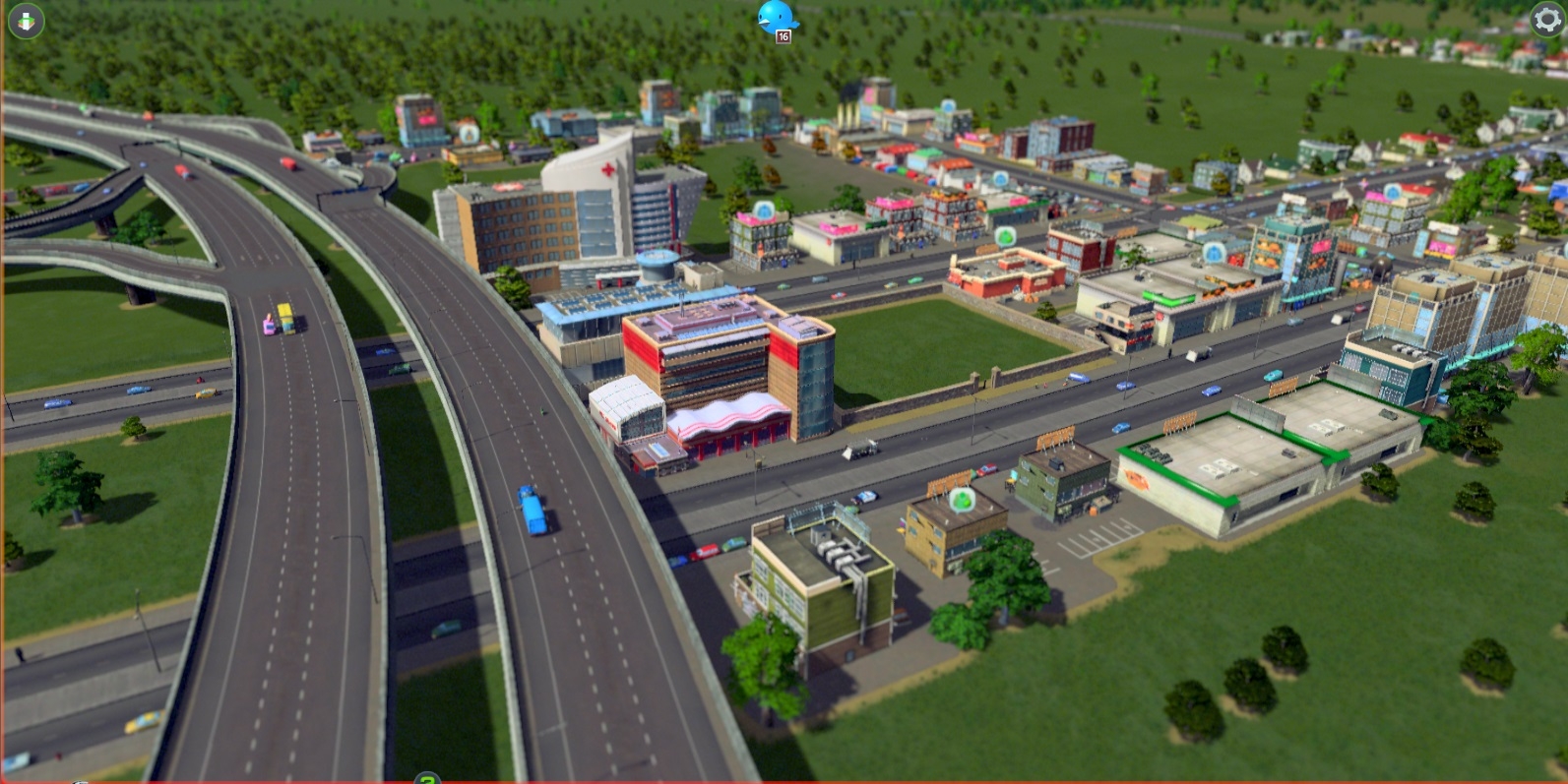 |
| Photo: Paradox Forums |
Full List of Countries That Drive On the Left 2022Anguilla Antigua Australia The Bahamas Bangladesh Barbados Bermuda Bhutan Botswana British Virgin Islands Brunei Cayman Islands Channel Islands Christmas Island Cocos Islands Cook Islands Cyprus Dominica Falkland Islands Fiji Grenada Guyana Hong Kong India Indonesia Ireland Isle of Man Jamaica Japan Kenya Kiribati Lesotho Macao Malawi Malaysia Maldives Malta Mauritius Montserrat Mozambique Namibia Nauru Nepal New Zealand Nieu Island Norfolk Island Pakistan Papua New Guinea Pitcairn Island St Helena St Kitts-Nevits (-Anguilla) St Lucia St Vincent Seychelles Singapore Solomon Islands Somalia South Africa Sri Lanka Surinam Swaziland Tanzania Thailand Tokelau Islands Tonga Trinidad and Tobago Turks and Caicos Islands Tuvalu Uganda United Kingdom Virgin Islands (U.S.) Zambia Zimbabwe |
Countries Where the Traffic is Left Hand (by Continent)
Australia
- Christmas Island
- Cocos (Keeling) Islands
- Cook Island
- Fiji
- Kiribati
- Nauru
- New Zealand
- Niue
- Norfolk Island
- Papua New Guinea
- Pitcairn Islands
- Solomon Islands
- Samoa
- Tokelau
- Tonga
- Tuvalu
Asia
- Bangladesh
- Bhutan
- Brunei
- East Timor
- Hong Kong
- Indonesia
- India
- Japan
- Macao
- Malaysia
- Nepal
- Pakistan
- Singapore
- Sri Lanka
- Thailand
Africa
- Botswana
- Kenya
- Lesotho
- Malawi
- Mauritius
- Mozambique
- Namibia
- South Africa
- Swaziland
- Tanzania
- Uganda
- Zambia
- Zimbabwe
Europe
- Akrotiri and Dhekelia
- Cyprus
- Guernsey
- Ireland
- Isle of Man
- Jersey
- Malta
- United Kingdom
South America
- Guyana
- Suriname
- Caribbean Basin
- Anguilla
- Antigua and Barbados
- Bahamas
- Barbados
- British Virgin Islands
- Cayman Islands
- Dominica
- Grenada
- Jamaica
- Montserrat
- Saint Kitts and Nevis
- Saint Lucia
- Saint Vincent and the Grenadines
- Trinidad and Tobago
- Turks and Caicos Islands
- U.S. Virgin Islands
Other Islands
- Bermuda
- Falkland Islands
- Maldives
- Saint Helena, Ascension and Tristan de Cunha
- Seychelles
- South Georgia and South Sandwich Islands
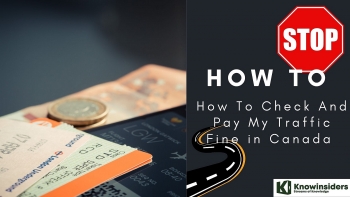 How To Check and Pay My Traffic Fine in Canada How To Check and Pay My Traffic Fine in Canada It is important to understand traffic rules and knowledge about fines and tickets when you decide to live in Canada. |
 How To Check And Pay My Traffic Fine in Australia How To Check And Pay My Traffic Fine in Australia Australia's traffic fines are often higher than other places, and it is necessary to understand traffic rules and how to pay and check (look up) ... |
 How To Check and Pay Traffic Fines Online in UAE How To Check and Pay Traffic Fines Online in UAE Check some useful tips in this post to know how to check (look up) and pay traffic police fines in UAE. |

























